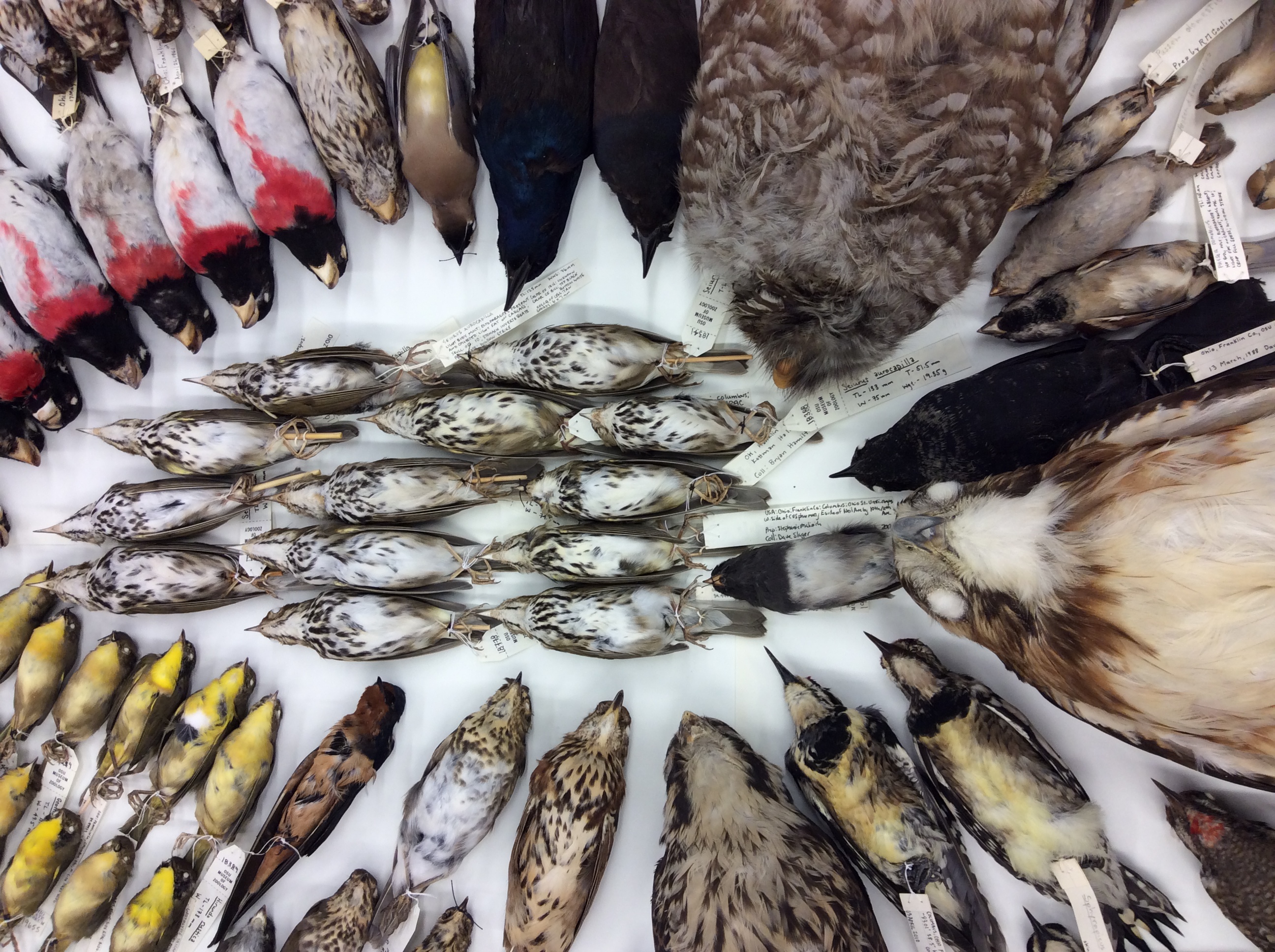Anyone who has walked through or even glanced into the Tetrapod Collection will have surely seen the taxidermy mount of an American White Pelican standing in the corner of the room. It truly is a charismatic bird.
The American White Pelican (Pelecanus erythrorhynchos) is one of the largest birds in North America with an average wingspan of 9 feet. That’s even more impressive than the Bald Eagle’s 6-7 foot wingspan. During the summer breeding months, American White Pelicans flock to the Northern Great Plains of the U.S. and the southern parts of Canada. After breeding season, they migrate across the U.S. to their wintering grounds in the Gulf of Mexico and along the Southern U.S./Mexican coastline. During migration, they may be seen resting and feeding right here in Ohio, in particular at some of the larger lakes in the state.

Sightings (as reported on ebird) of American White Pelicans close to Columbus within the last 10 years
Like all individuals of the eight living pelican species (two of which, the White and the Brown Pelican, occur in North America), the American White Pelican has the distinctive throat pouch that is used to scoop up fish while feeding. Due to their large size, American White Pelicans can’t dive from the air for fish like other fish-eating species such as the Belted Kingfisher; instead they swim on the water’s surface and dip their bills into the water to scoop up fish. The pelicans will then tip their heads to drain out the water and swallow only the fish. To find out more general facts about these birds, visit The Cornell Lab of Ornithology.
As if the pelican’s beak wasn’t peculiar enough, scientists now say it may be used to tell males and females apart. In many birds, distinguishing males and females is easy since males have colorful and extravagant plumage features. When a male and female of a species look different in some way, it is known as a sexual dimorphism. However, there are some species of birds, such as the American White Pelican, where males and females have very similar plumage making distinguishing the different males and females difficult. However, research done by Brian Dorr et. al (2005) shows that male American White Pelicans have significantly longer bills than females. The researchers measured the culmen, the area of a bird’s beak that stretches from where the beak’s base meets the feathers to the end, of 188 American White Pelican specimens that were collected in Mississippi and Louisiana. Dorr et al’s research shows that measuring culmen length can be used to determine the sex of American White Pelicans.
So, can we use this method to at least determine our pelican’s sex? I went to work with a metric ruler and measured the culmen to a length of 280 mm. According to the study, a culmen length of ≥310 mm indicates a male and ≤309 mm indicates a female. Thus our specimen is most likely a female.
This is a great example of how research on museum specimens can help with identifying individuals in the wild. In our case, it helped with adding a piece of information to an old, well-preserved specimen and making it more valuable to the scientific community.
References
“American White Pelican.” Identification, All About Birds. The Cornell Lab of Ornithology, n.d. Web. 26 Aug. 2015. http://www.allaboutbirds.org/guide/American_White_Pelican/id
Dorr B., King D.T., Harrel J.B., Gerard P., and Spalding M.G. 2005 The Use of Culmen Length to Determine Sex of the American White Pelican. The Waterbird Society 28, 102-106. BioOne. http://www.bioone.org/doi/full/10.1675/1524 4695(2005)28[102:TUOCLT]2.0.CO;2


